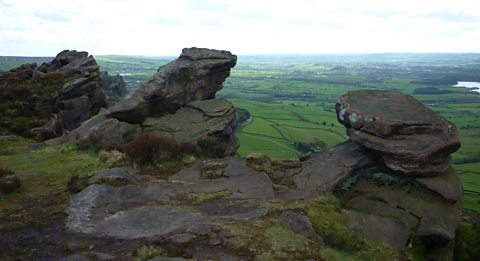Geologist and keen climber Dr Tom Challands challenges a pair of young people each to climb a rock face and see just what can be revealed from this unique vantage point, on the rock face rather than observing from the ground.
The climbs are not only technically demanding but throw up different field study challenges for the team to solve.
The location is the Cwm Idwal Slabs in the Snowdonia National Park.
The challenge is to investigate how the Cwm Idwal slab they tackled was affected by tectonic activity in the past and to spot the evidence which identifies the cause of subsequent erosion.
This clip is from the series Rock Types at Great Heights.
Teacher Notes
Could be used to introduce elements of the geology, geography and earth science syllabus, or in preparation for field studies.
Students can be encouraged to make notes on field study procedures, for example, how to measure the dip, strike and dip direction of the bedrock.
This could spark discussions on the different challenges faced when conducting field studies in comparison to classroom study.
Curriculum Notes
This clip will be relevant for teaching GCSE Geography and Social Studies. This topic appears in OCR, AQA, Edexcel, WJEC KS4/GCSE in England and Wales, CCEA GCSE in Northern Ireland and SQA National 4/5 in Scotland.
More from Rock Types at Great Heights
Castle Inn Quarry (Snowdonia National Park) video
Two young people climb Castle Inn Quarry to study geology from a unique vantage point.

How the Roaches in the Peak District were formed. video
Two young people climb The Roaches to study geology from a unique vantage point.
